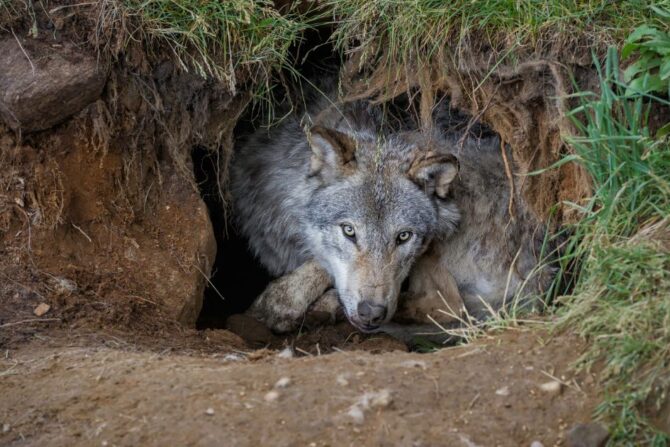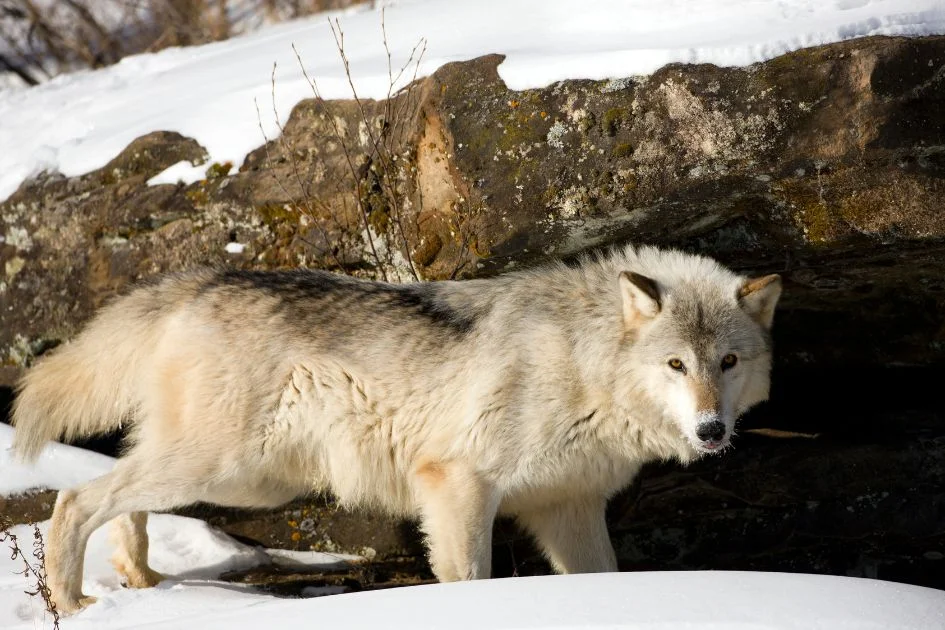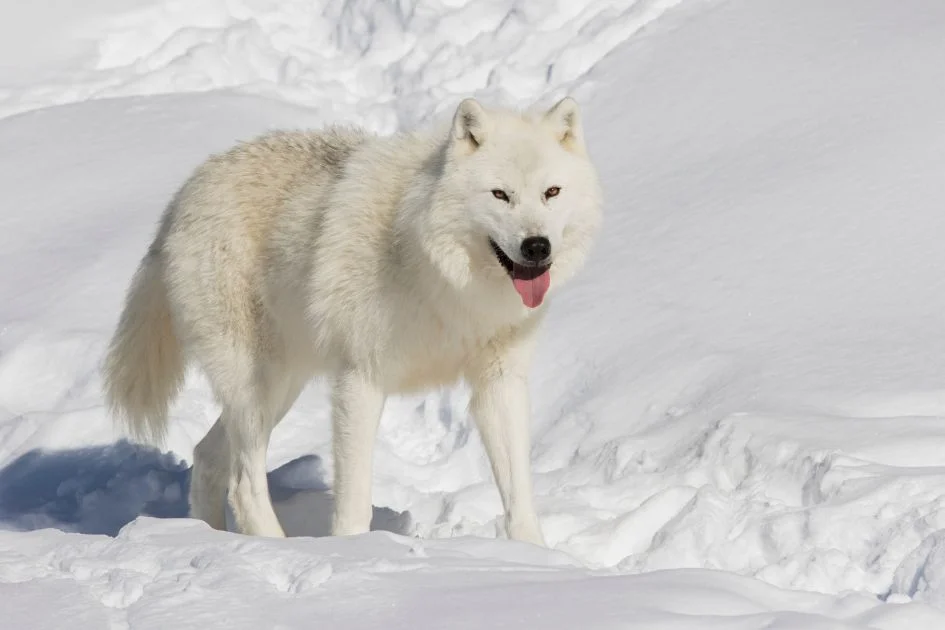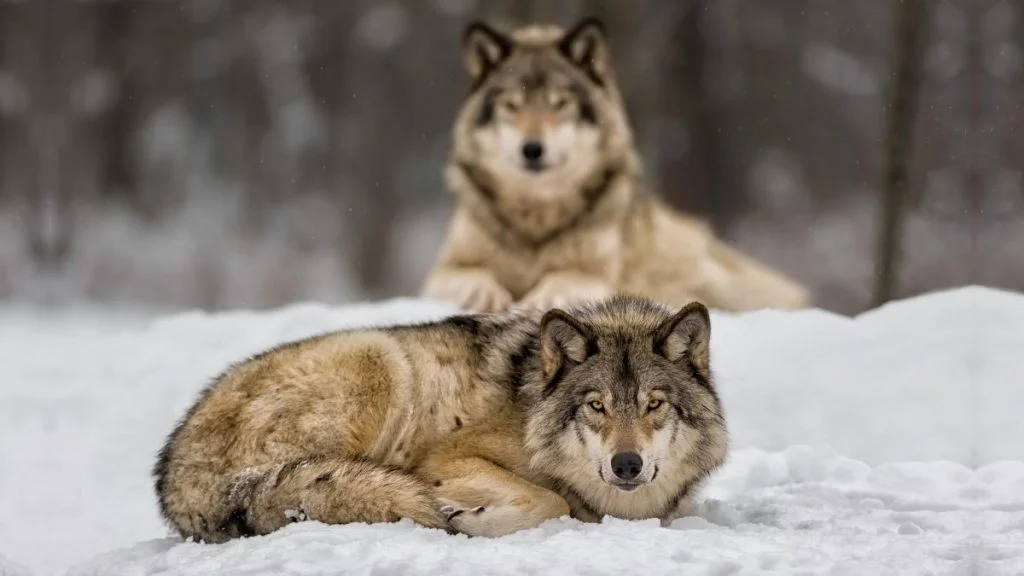Hibernating and/or migrating is a tradition amongst many animals, just as we have our traditions (like shopping for thicker wears and amping up the heater).
Sometimes we assume all animals out in the wild survive the winter by hibernating or migrating, but that’s not always the case.
Where do wolves fall? Do wolves hibernate or migrate?
Wolves neither hibernate nor do they migrate (for the most part). They remain active all through the year, both during warmer and colder seasons.
They’ve developed ways to adapt to the winter, and so they remain out in the wild, looking for the next meal to keep them alive.
Their lifestyle is quite different from animals like bears that grow fat enough during summer and hibernate when winter comes.
Wolves can’t accumulate fat, nor do they store food like some other animals. They have to find other ways to survive.
Here’s more on wolves and how they survive during winter.
Do Wolves Hibernate or Migrate During Winter?

No, wolves do not hibernate during winter. Unlike some other mammals like bears, squirrels, and hedgehogs, wolves don’t hide away during the cold season.
They also don’t migrate as a general rule, but there are some exceptions.
When their prey migrates to another habitat during winter, they are forced to do the same to survive.
Wolves are territorial and don’t fancy changing territories, nor are they built to hide away for a long time.
However, they are flexible and have a strong survivor’s instinct which can cause them to change location when they need to. The survivor’s instinct also helps them stay alive under harsh weather.
Thus, the only reason wolves migrate is in search of food. This happens often because small animals and birds migrate as their means of surviving the winter.
They move in packs, and are so strong they can travel up to 25 miles a day. This can happen daily, depending on how fast they locate decent food.
Why Do Wolves not Hibernate or Migrate During Winter?

Wolves do not hibernate during winter for one simple reason: they can survive it.
Winter might pose some significant challenges for them, but it is always possible for wolves to live through winter.
Wolves are pack animals by nature, but winter makes going in a group even more necessary. Lone wolves can survive if the prey is around, but it’s easier to go in a pack.
They do what they can to survive during the winter, and that means eating whatever animal is available.
Wolves tend to be less picky during winter, and they can feed on insects or any bird they stumble upon.
Their territorial nature makes them stick to one environment, so migration is not a natural adaptative mechanism against the winter.
However, as we pointed out above, they can be forced to move in search of food.
How Do Wolves Stay Warm in the Winter?

Wolves have thick fur that protects them from the strong winds of a cold winter night. Some tribes in history were known to skin wolves and use their fur as a sweater.
This attests to how warm their fur can be. They can survive temperatures going down to -40 degrees, which is a lot colder than a refrigerator.
This helps them stay active at night, and gives them an advantage over prey that may find it harder to cope with the cold.
The pack system also helps a lot during winter. Wolves seek out other wolves and stay close to them to get more warmth. They might also curl themselves into a ball to preserve the warmth.
Their furs are double, which many domestic dogs like Huskies still retain. When winter goes by and the weather turns warm, they shed to adapt to the new season.
How Do Wolves Survive in the Winter? How Do they Feed?

Wolves hunt during the winter, looking for prey to feed on. However, they don’t eat as frequently as they would during summer.
Because it is harder to come across prey during winter, many wolves adapt by eating a large meal that can take them for days or weeks.
They then preserve energy by moving less at night and not overexerting unless they sight another prey.
Traveling miles happen when there’s a total lack of prey in their environment.
They can either go alone or in a pack. Being in a pack increases the chances of them taking down a big prey and helping themselves survive.
The lone wolf has a harder time surviving than those in a pack, but pack wolves must follow strict rules.
The alpha male and/or female take priority, and when the pack finds food, the male and female eat first.
When they get to a new environment with prey, they settle for a while to feed. Altogether, wolves can travel more than 100 miles during winter.
Hunting is done more during the day than at night and this pattern is more helpful for wolves as they can conserve energy and find prey faster.
Do Arctic Wolves Hibernate?

Arctic wolves are also called white wolves or polar wolves, and they are subspecies of gray wolves.
As the name shows, these wolves can be found in arctic regions. Like any normal wolf, arctic wolves don’t hibernate.
They are more than capable of adapting to the cold, seeing as they live in it longer than other wolves.
They are not natural migrators, but due to their environment, they have to move more than other wolves in search of prey.
Final Thoughts on Wolves in Winter
Many animals hibernate or migrate naturally during winter, but wolves are not among them.
These animals have different ways to survive the harsh ways, from their fur to changing environments to find prey.
Their survivor spirit helps them last all year without having to go into hibernation.
You May Also Like:
- Do Bears Eat Wolves? Or The Other Way Round?
- Are Wolves Friendly To Humans? Do Wolves Make Good Pets?
Featured Image Credit: Daniel Parent/Getty Images






